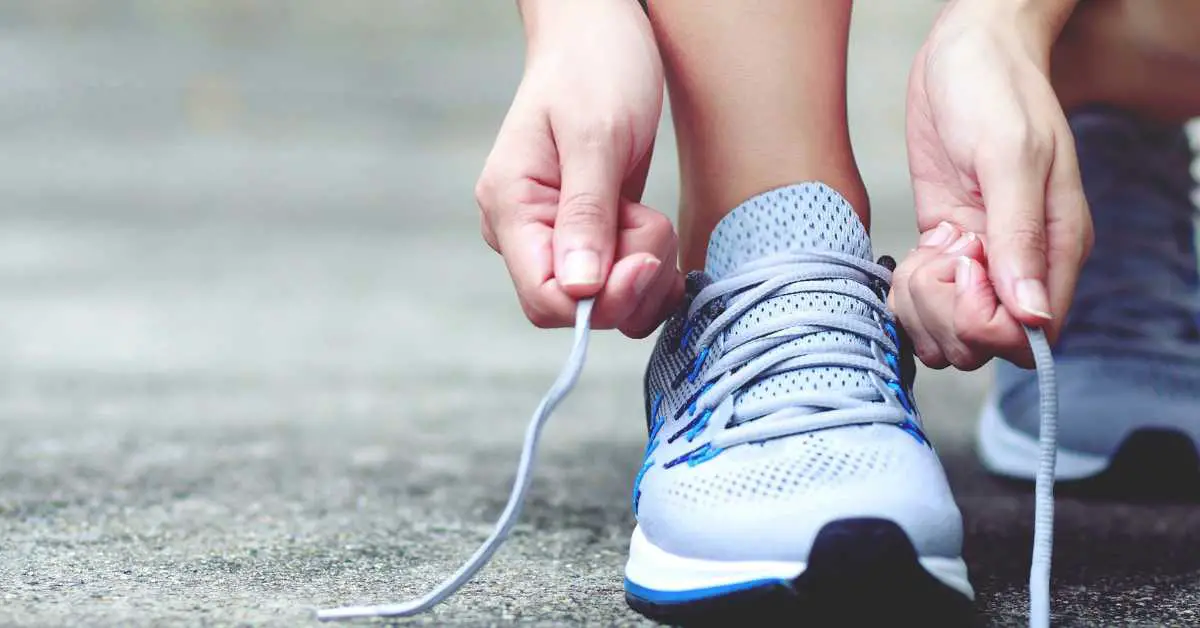People always say that to get better at running you need to run more. I used to be one of them. But I was wrong! In this post, I’ve put together a list of great resources so you can get the most out of your training sessions and learn how to get better at running without running more.
Get Better Running Without Running A Mile
Yes, it’s true that simply increasing your mileage isn’t always the most effective way to improve your running performance. Here are some tips on how to get better without running more.
Strength train
Weight training is one of the best ways that runners can improve their performance. I found it helps prevent muscle soreness after running, improves your balance, increases your speed and endurance, as well as minimizing your chance of injury.
When I first started running, I thought that stronger muscles meant bigger muscles and increased body weight. My idea of cross-training, like many runners, was to include long runs into my running routine.
What I learned over time was that gaining muscular endurance is just as important as cardiovascular endurance for my overall health and training.
Building a Strong Foundation
Adding weight training into your running program can create a strong fitness foundation and increase your chances of success as a runner. strength training helps you build muscle, which translates into improved running economy and reduced risk of injury. By becoming stronger overall, you’ll have a better foundation to build upon when it comes to increasing your running performance.
In addition, strength training can also help to address muscular imbalances and weaknesses that can lead to poor running form or injury. For example, if you have weak glutes, you may be more prone to knee or hip pain while running. By targeting these muscles through weight training, you can improve your overall running mechanics and reduce your risk of injury.
Furthermore, incorporating weight training into your running program can also prevent boredom and burnout. Variety is important for maintaining motivation and enjoyment in your exercise routine, and weight training can provide a nice change of pace from running.
Addressing the training habits we love to avoid
Many runners and people in the running community have never been big fans of using weights or other activities that appear to be body-building related. They are typically avoided at all costs.
Stretching exercises, foam roller workouts, and other yoga mat related also commonly pushed aside. Instead, the focus of logging miles is the ultimate goal.
Cross training
Cross-training is a great way for runners to become faster and stronger. It involves incorporating different types of exercise into your routine, such as cycling, swimming, or strength training. By doing so, you give your body a break from the repetitive motions of running, while still maintaining cardiovascular fitness and building strength.
One way it helps runners is by reducing the risk of injury. Running can put a lot of stress on your joints and connective tissues, which can lead to overuse injuries. Cross-training can help to alleviate this stress by providing a low-impact workout that still challenges your cardiovascular system and strengthens your muscles.
Understanding Endurance, Energy, and Intensity
Developing an understanding of how cross-training can improve endurance, energy, and intensity can help you see why doing other types of exercise besides running can be beneficial for improving your running performance.
Endurance is simply being able to do physical activity for a long time. Running helps build endurance, but doing other exercises like cycling or swimming can help too. Most runners would be surprised to learn that walking is beneficial as well.
Learning more about the importance of energy was also an eye-opener for me. While most runners understand that energy fuels muscles during exercise, there are several different types of exercise, besides hitting the pavement, to can improve the body’s energy systems, too.
Running uses oxygen. This is called aerobic exercise. But other exercises like weight training or HIIT can help your muscles produce energy without oxygen, which can improve your running game and improve your peak performance.
Aerobic vs Aberoic
Aerobic means ‘with air’ and refers to your body producing energy with the use of oxygen. This involves any exercise that lasts longer than a couple of minutes. Think of running, “aerobic” classes, cardio workouts, etc.
Anaerobic means ‘without air’ and refers to the body producing energy without oxygen. These activities involve high-intensity movements and resistance training, like lifting weights while keeping the reps low, and high-intensity training, like running sprints.
Intensity means how hard you work during exercise, and it’s important to vary the intensity to avoid getting bored, tired, or losing motivation. Doing other types of these exercises can reduce the risk of health issues, build explosive power, as well as help you on race day.
Overall, incorporating other types of exercise besides running can make you a faster and better runner, and make exercising more fun!
5 Ways To Improve Your Running Without Lacing Up
Simply running more miles is not always the most effective way to train and improve your running performance.
Here are five ways to improve your running without running:
- Strength training builds the muscles you need for running, including your legs, core, and upper body.
- Cross-train, or engaging in other types of exercise, such as cycling, jumping rope, swimming, or rowing, improves your endurance, cardiovascular fitness, and muscle strength without the high-impact stress of running.
- Add stretching into your routine improves your flexibility and range of motion, which can help reduce the risk of injury and improve your running form. Foam rolling is a popular way for athletes to address sore or stiff muscles.
- Taking time to rest and recover is just as important as exercise. Giving your body enough time to recover between each hard workout prevents injury and improves whole-body fitness.
- Eating a balanced diet that includes plenty of protein, healthy fats, and carbohydrates can provide the energy and nutrients your body needs to perform at its best. Staying hydrated is also important for maintaining optimal performance during exercise.
How Can You Become a Better Runner Without Running?
Running is a great way to stay fit and boost your cardiovascular health. But as we already covered, run training is just the starting line for becoming a better runner.
Runners have to deal with the injuries that come with running a lot, especially distance runners —and they can be pretty severe. The point is to stay healthy during your training so you can have your peak performance on race day. Here are some ideas:
- Swimming is an excellent way to stay fit without putting stress on your joints or bones. You’ll burn calories without putting pressure on your body, and it’s easier on your heart than running or jogging. Swimming also helps strengthen muscles in your arms, shoulders, and legs—even though they’re not being used while swimming!
- Cycling is another great option for getting exercise without putting stress on your joints or bones. It’s also a good way to work out your arms and legs at the same time! It’s also a way to improve your aerobic capacity.
- Dancing is an awesome way to get fit—it’s fun and easy! Just get a good beat going on your iPod (or whatever), put on some dancing shoes (or socks!), and let loose! Dancing also helps build muscle tone throughout your entire body. Your running coach will approve!
Jump Rope
Jumping rope is a high-intensity exercise that improves your cardio fitness and endurance. It’s also a great way to improve your lactate threshold.
This threshold is the point at which lactate in the muscles exceeds the body’s ability to remove it. This causes body fatigue and limits your performance.
Jumping rope increases the production of lactate in your muscles, which trains your body to get better at removing it. This ultimately leads to better endurance and running performance.
As a high-intensity, and low-impact exercise, rope jumping benefits your coordination, speed, balance, and agility, which are all important for running. Jumping jacks are a good alternative as well.
Workout of the Week: Foam Roll
Foam rolling increases your flexibility, reduces muscle soreness, and improves your range of motion. Incorporating a foam roller workout into your training routine can help reduce the risk of injury and improve your running performance.
Here are a couple of foam roll exercises that can be particularly beneficial for runners:
IT Band Roll
The IT band is a thick band of tissue that runs along the outside of your thigh, from your hip to your knee. Foam rolling your IT band can help with flexibility and relieves tightness in this area.
To perform an IT band roll, lie on your side with the foam roller under your outer thigh, just below your hip. Use your arms and your other leg to control your movement as you roll the foam roller down your outer thigh towards your knee. Pause for a few seconds when you find a tender spot, then continue rolling down to just above your knee. Repeat on the other side.
Calf Roll
The calf muscles can become tight after a long run. Foam rolling your calves can help with the soreness.
To perform a calf roll, sit on the floor and place the roller under your calves. Use your arms to lift your hips off the ground and roll the foam roller up and down your calves, from your ankles to just below your knees. Pause when you find a tender spot, and try to relax your calf muscle over the foam roller for a few seconds. Repeat as necessary.
Sleep More
Getting adequate sleep is essential for optimal running performance. Sleep allows your body to repair and recover from the physical stress of running. Lack of sleep can lead to fatigue, decreased motivation, and poor concentration, which can negatively impact your running performance.
Aim to get at least 7-8 hours of sleep per night to ensure you are well-rested and ready to perform your best during your runs.
Eat Well
Eating habits and diet can significantly impact your running performance. Here are some tips to help you focus on your eating habits and diet to enhance your distance running:
A balanced diet should include plenty of fruits, vegetables, lean proteins, and whole grains. These foods provide the necessary nutrients, vitamins, and minerals that your body needs to perform well during a run.
Carbohydrates are the primary fuel source for your body during exercise, so it’s important to eat enough of them. Pasta, bread, rice, and potatoes are great sources of carbohydrates.
Adequate hydration allows you to maintain a high level of performance during a run. Be sure to drink enough water and fluids to prevent dehydration.
Try to eat regularly throughout the day to maintain your energy levels. Skipping meals can lead to low energy levels and decreased performance during a run.
High-fat and high-sugar foods can make you feel sluggish and can negatively impact your running performance.
If you have specific dietary needs or concerns, a registered dietitian can help you create a personalized eating plan to improve your running performance.
Summary
I hope you found the tips in “How to become a better runner without running” to be helpful.
Cross-training is an excellent way to improve areas of your overall fitness that running simply can’t address. While I’m not suggesting your need to stop doing bicep curls each day, adding new training to your current program can significantly build upon your fitness foundation.

Rick Huey is a fitness writer who has dedicated his life to living an active lifestyle. With more than 30 years of experience in the fitness industry, Rick is a respected contributor for FitFab50.com, where he shares his wealth of knowledge with a wide audience. His dedication to promoting the benefits of living an active lifestyle has inspired many people to pursue their own fitness journeys with enthusiasm and dedication.
